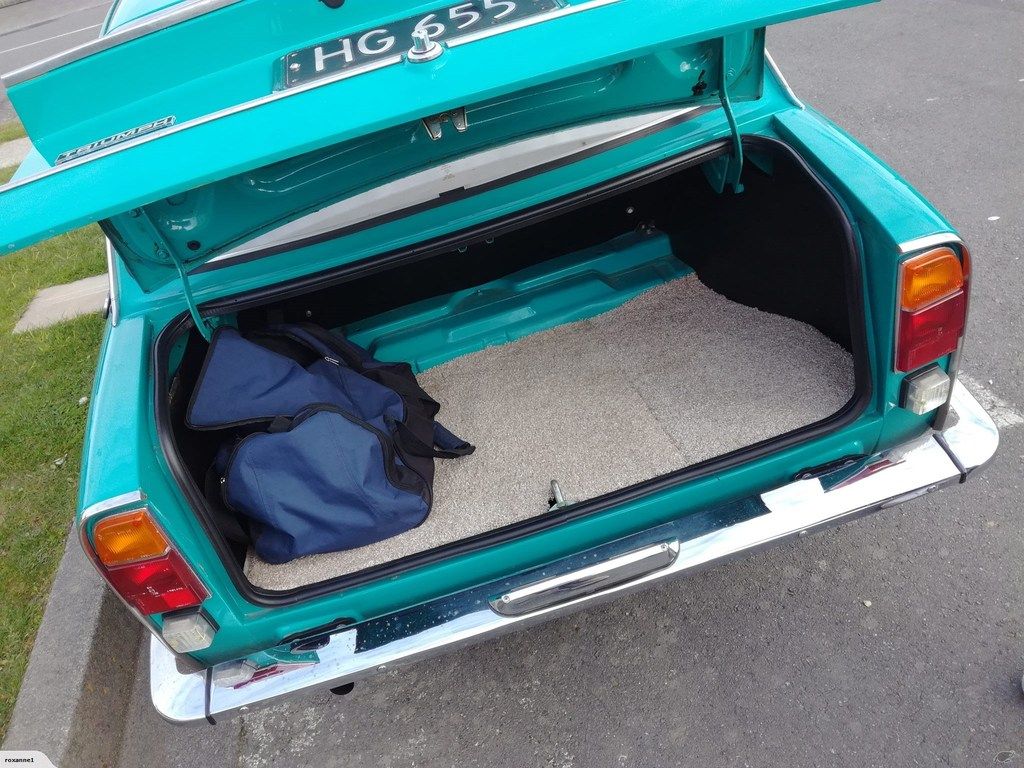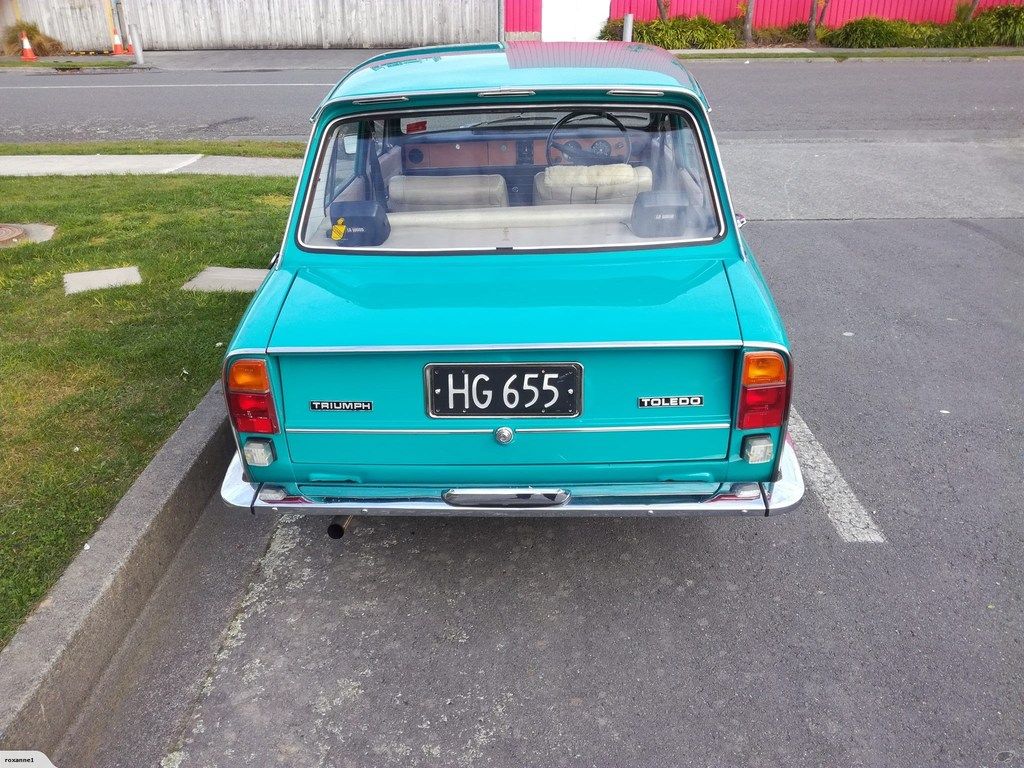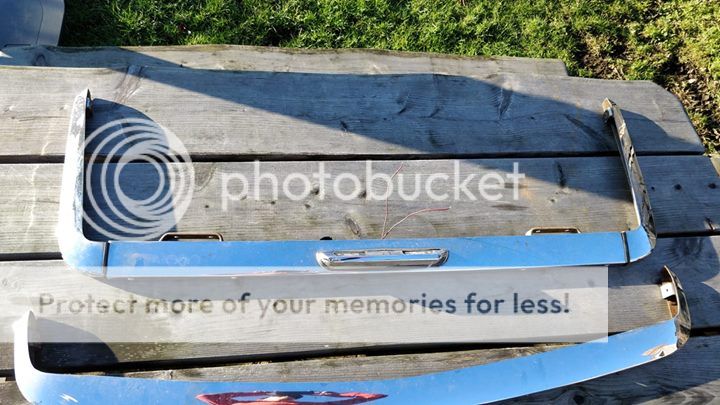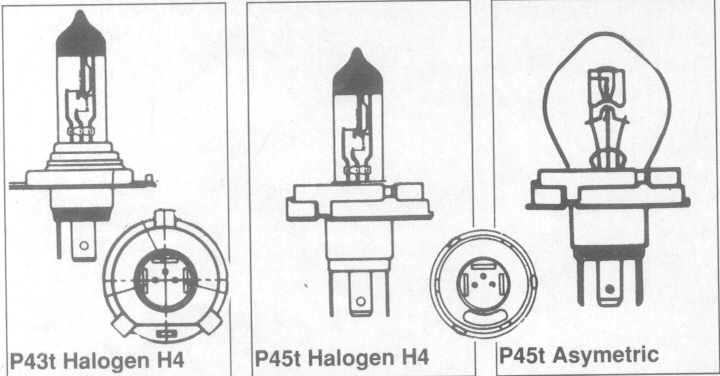AlastairC wrote: ↑Mon Mar 18, 2019 1:06 am
Next task is to put underseal under the car - part of doing this is getting new double clips tube from bresco and also redoing the fuel pipe. Current one seems to be steel and is quite badly rusted. I've found a supplier of Cunifer pipe in Auckland and hopefully I will be able to borrow a pipe bender from someone - all looks fairly straight forward using the old pipe as a template. I notice the fuel pipe is in 3 or 4 sections held together by rubber fuel pipe. Should I continue this or should I join it with proper flared ends and joins? The brake line looks ok so will leave that.
If you are replacing the fuel pipe with Kunifer 10 (cupro-nickel alloy comprising 90% copper & 10% nickel) pipe, then using in-line connectors & unions (preferably bronze rather than brass or plated steel) would probably be a better, more durable option than using flexible hose and Jubilee clips.
Unless your existing brake pipes are already Kunifer 10 or similarly durable and rust-resistant material, I would be inclined to replace them with Kunifer 10 pipe (excellent corrosion resistance and very easy to bend & flare) whilst you are refurbishing and/or upgrading the rest of the braking system.
AlastairC wrote: ↑Mon Mar 18, 2019 1:06 am
I like the idea of putting a complete dolomite dash in the car - however they're hard to find in NZ, if any one has a complete one Id be interested in hearing about it - although thinking about it now I do know of one .......
I was sitting in the car yesterday and being quite tall I was considering the steering height adjustable steering column......that would be a major job fitting that wouldnt it? But the dash sounds doable.....I think any steering column would have to be on maximum height for my use. The slightly smaller diameter Dolomite steering wheel gives a little extra leg room.
By the winter of 1982/83, my night-time driving experiences in wet weather, had thoroughly convinced me of the need to upgrade the Toledo, with a steering-column-mounted, windscreen-wiper & washer switch. It would be so much easier, quicker and safer to find a stalk switch on the steering column, to activate the windscreen wipers and/or washers, especially at night on an unlit road, when one could NOT easily see the location of the Toledo’s factory-fitted, dashboard-mounted, windscreen-wiper & washer switch; which could later be re-employed for a rear-window wiper & washer system of some sort, if I ever got around to retro-fitting one.
Windscreen soiling was particularly bad after the rain had stopped, when the road surface was still covered with a film of dirty water. As a consequence of this, one’s windscreen was frequently swamped by a deluge of gritty, dirt-laden spray, from the wheels of passing vehicles, of which large lorries and buses were particular culprits.
Under these circumstances, one needed to quickly activate both the washers (owing to the lack of cleansing rain) and wipers, particularly if there was only a little water accompanying the dirt and grit. On busy roads, especially dual carriageways and motorways, one sometimes needed to repeat the wash & wipe process, a few times every minute, which on some of my 80 mile journeys, almost emptied the 2 pint windscreen-washer reservoir of water!
Hence, at the next opportunity, I made another pilgrimage to the local car breakers’ yards, where I salvaged a complete steering-column nacelle & switch assembly from a “four-headlamp” Triumph Dolomite, comprising:
• Two-piece, moulded plastic nacelle, held together with three machine screws;
• Windscreen wiper & washer, combination stalk-switch, with flick-wipe facility;
• Headlamp-dip, direction-indicator & horn, combination stalk-switch;
• Main headlamp & sidelight, rotary-switch.
It is questionable whether it was necessary to buy both stalk-switches, but the stalk-end, push-button switches of the Toledo and Dolomite were of a different style, and I wanted a matching pair of stalk-switches for aesthetic reasons.
When I tried to fit the Dolomite steering-column nacelle to the Toledo steering column, I discovered an insoluble problem! The positions of the three fixing screws, which held the upper & lower halves of the nacelle together and secured it to the steering column, were not compatible with the Toledo steering column; the triangular arrangement of screws and screw-holes being configured differently.
Being determined not to abandon this project, I resorted to also salvaging the Dolomite’s complete steering-column assembly and associated three-spoke steering wheel, with leather-covered, padded rim, whose diameter was slightly smaller than that of the Toledo. As things turned out, the substitution of the Dolomite’s adjustable steering column & associated steering wheel, proved to be a beneficial, albeit unintentional upgrade.
However, when I substituted the Dolomite adjustable steering column, I discovered that there was a space between the mounting brackets and the front bulkhead below the windscreen, owing to differences between the Toledo’s flat-panel dashboard and the Dolomite’s moulded dashboard with separate curved-profile instrument panel. Hence it was necessary to incorporate spacer shims to rigidly mount the steering column.
Having all the major switch-gear mounted on the steering column, was a vast improvement and I’m surprised that BLMC Triumph hadn’t already upgraded the later-model Toledos in this way, at little if any additional cost! After all, the 1986 onward, rationalised, “two-headlamp” Triumph Dolomite 13/1500, with the fixed, non-adjustable steering column, was so equipped.
I am in no doubt, that having a steering-column mounted, windscreen wiper & washer, combination stalk-switch, greatly improved driving comfort and safety. The additional flick-wipe facility, also proved to be particularly useful in conditions of light drizzle or fog, when only a single, occasional sweep of the windscreen wipers was needed.
Although not crucial, having the main lighting switch on the steering-column nacelle, was more convenient to use and it freed-up space on the dashboard, for more minor accessory switches. Alternatively, I could have retained the Toledo’s original dashboard-mounted main lighting switch, as a front & rear fog-lamp switch or even a two-zone, electrically-heated, front-windscreen switch, if such windscreens ever become available for the Toledo & Dolomite.
The Dolomite’s bulkier steering-column nacelle, with considerable unfilled space inside, also offered scope, for the incorporation of additional steering-column mounted accessory switches; an option I enthusiastically exploited later for the following electrical accessories:
• Matched pair of 7 inch diameter, Lucas 20-20, H3 55W quartz-halogen, auxiliary driving lamps;
• Matched pair of 7 inch diameter, Lucas 20-20, H3 55W quartz-halogen, front fog lamps;
• Matched pair of surface-mounted, Starlux rectangular rear fog lamps;
• Single Lucas Square-8, H3 55W quartz-halogen fog light => auxiliary reversing light.
Substituting the adjustable steering column is an easy, straightforward job. Although one can still use the original Toledo under-dashboard parcel shelf, it would be better to have the appropriately shaped one associated with the adjustable steering column, but so far I have yet to find one in good condition for myself.
To date, I have acquired two adjustable-steering associated, under-dashboard parcel shelves from late-model Triumph Dolomite 1500HLs, but neither is in useable condition without some refurbishment or repair, to rectify torn and/or distorted millboard. Ultimately, I might need to fabricate a new parcel shelf from scratch, using whatever materials are salvable from my original Toledo parcel shelf and the two Triumph Dolomite 1500HL parcel shelves, plus any other suitable materials I can acquire.
When I retro-fitted the Dolomite adjustable steering column with associated nacelle (the Toledo nacelle won’t fit!) & switches and early-model Triumph Dolomite 1850 sculptured dashboard in 1982 and 1984 respectively, I simply modified the existing Triumph Toledo wiring loom, using insulated wires of appropriate colours that I had salvaged from the local car breaker’s yard.
I have since recently acquired an almost complete wiring loom from a 1980 Triumph Dolomite 1500HL
Automatic, which I might later substitute and modify further for my various additional instruments and accessories, including the senders/switches for (a) carburettor choke engaged, (b) handbrake on, and (c) low fuel level.
The Triumph 1500 & 1500TC, plus the Triumph Dolomite 1850, 1500HL, 1850HL & Sprint models were all fitted with the sculptured dashboard having a curved-profile instrument panel, together with an adjustable steering column.
All of the above Dolomites had a 105 mm speedometer (no integral warning lights), 105 mm tachometer, 52 mm fuel gauge, 52 mm temperature gauge, 52 mm voltmeter, 60 mm 8-segment warning-light cluster & hazard warning light switch and clock.
The Triumph 1500 & 1500TC had just a 105 mm speedometer (no integral warning lights), 105 mm housing incorporating a fuel gauge, temperature gauge & voltmeter and a 60 mm 8-segment warning-light cluster. I am not sure whether they had a clock and a hazard warning light switch.
Triumph 1500 instrument panel
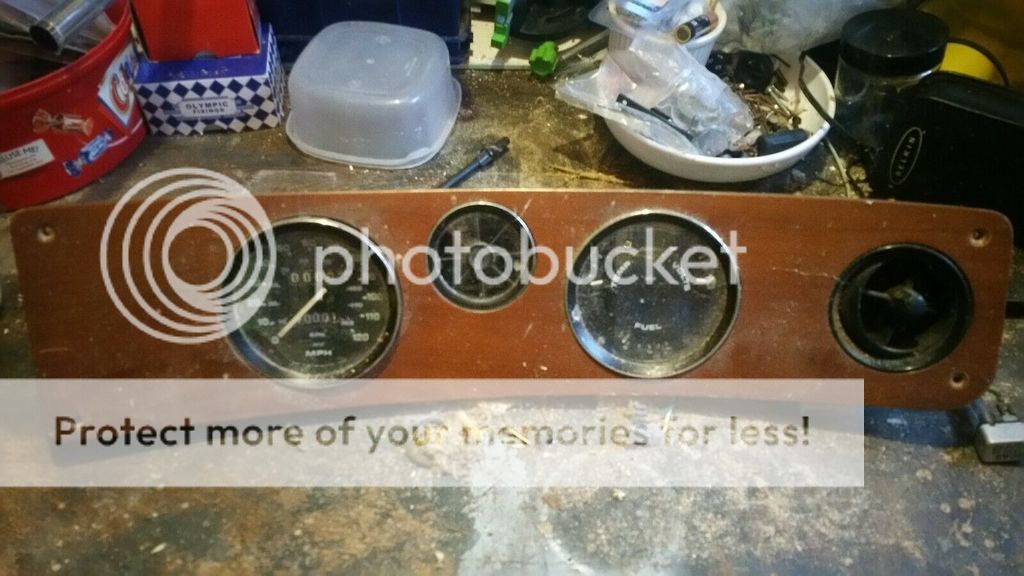 RWD Triumph 1500TC literature - dashboard etc
RWD Triumph 1500TC literature - dashboard etc

The complete dashboards and/or instrument panels with instruments, appear for sale on British Ebay quite frequently, but to get one of the adjustable steering columns one would probably need to post a wanted notice or contact a vendor advertising that they were breaking a car for spares. As with wheels, the challenge would be to ship them from Great Britain to New Zealand at reasonable cost.
When in 1984, I substituted an early-model Triumph Dolomite 1850 dashboard into my 1974 Triumph Toledo, I retained the Toledo’s original heater unit with just upper & lower airflow outlets, discharging to the windscreen demister cum defroster vents & front foot wells respectively.
1972 Triumph Dolomite 1850 literature - dashboard etc
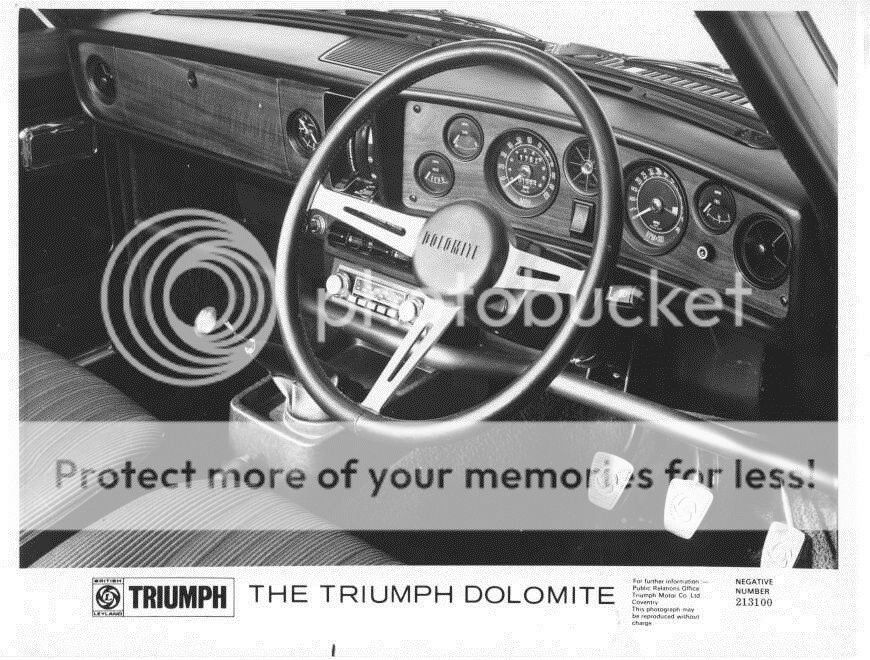
Use of this Dolomite 1850 dashboard, also required the substitution of the associated moulded-plastic duct to fit on top of the heater unit and the associated satin-black-painted steel demister grille.
The mounting brackets of adjustable steering, that I had previously substituted in 1982, mated up perfectly with the fixing holes in the back of the Dolomite 1850 dashboard and also the threaded holes in the front bulkhead; no longer requiring the use of spacer shims.
Although the steel dashboard-mounting flange below the Toledo’s windscreen was not ideally suited to mounting the Dolomite 1850 dashboard (plus the associated moulded-plastic duct to fit on top of the heater unit and the associated satin-black-painted steel demister grille), I was able to drill additional holes in the flange and adequately secure everything in place using machine screws, nuts & washers.
I might improve this mounting (possibly using clinch-nuts) when I eventually substitute a late-model Triumph Dolomite 1500HL dashboard, that is in better condition than the Dolomite 1850 dashboard, which has a small split in the black-vinyl covering; covered by black PVC insulating tape.
The L-shaped steel brackets on either side, at the bottom of the Dolomite 1850 dashboard, which fasten to the vertical side panels of the car, aligned perfectly with the pre-threaded holes in the Toledo. No fettling was needed!
However, what was needed that I hadn’t anticipated, was the heating & ventilation control-lever assembly with three control-levers, from the Dolomite 1850’s heater unit or similar heater unit; the Toledo’s original three control-levers being too short by a significant margin.
Because I retained the Toledo’s original heater unit, I didn’t need the Dolomite 1850’s moulded-plastic, horizontal-airflow outlet cum mounting for the carburettor choke control & cigarette lighter, that fits under the centre of the dashboard.
Hence, I needed an alternative location for the Toledo’s original carburettor choke control, which I chose to mount in left-hand side of the curved-profile instrument panel, between the two 52 mm gauges and the 105 mm instrument. This location proved to be quite satisfactory, but the choke control had to be removed, if I needed to remove the instrument panel for maintenance.
One advantage of retaining the Toledo’s original heater unit and omitting the Dolomite 1850’s moulded-plastic, horizontal-airflow outlet, is that one has more space available for a central console above the gearbox cover, to mount an audio entertainment unit and/or supplementary instruments.
In common with my 1974 Triumph Toledo’s original dashboard, the early-model Triumph Dolomite 1850’s dashboard, had brackets fastened to the underside, for the speedometer’s trip-counter, remote-control zeroing cable & knob, and the heated rear-window’s dashboard switch with integral tell-tale light; neither of which are a feature of late-model Dolomite dashboards.
With the exception of retaining my Toledo’s original 100 mph & 160 km/h speedometer with three integral warning lights, in place of the 120 mph & 190 km/h speedometer with no warning lights, I chose to use all of the other Dolomite 1850’s instruments and clock, which were a close match to the style of the Toledo’s instrumentation, apart from the Dolomite speedometer’s and tachometer’s centre-hub & pointer.
British specification, 1974 Triumph Toledo 1300's Smiths speedometer
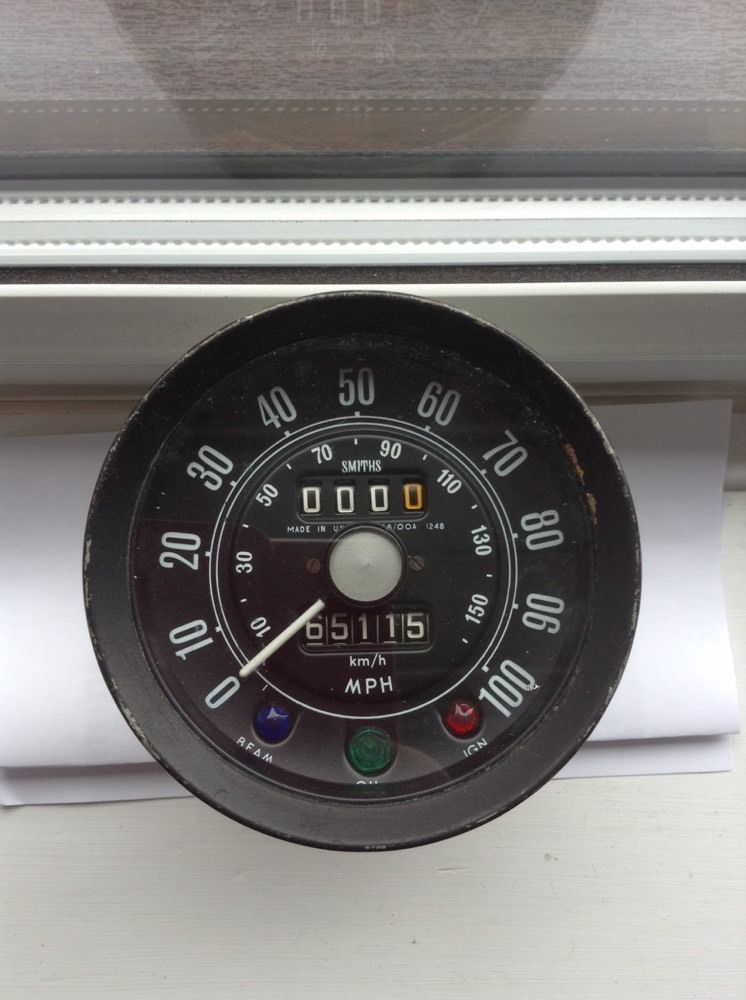 New Zealand specification, 1974 Triumph Toledo 1500's Smith's speedometer
New Zealand specification, 1974 Triumph Toledo 1500's Smith's speedometer

After substituting a spare centre-hub & pointer, from a defunct Toledo speedometer, into the Dolomite 1850’s tachometer, I discovered that the tachometer was non-functional, for reasons I have yet to discover. If I had discarded the non-functional tachometer, I could have retained my Toledo’s original 105 mm instrument housing, incorporating the fuel gauge, water-temperature gauge and two direction-indicator warning lights.
This would have made two of the 52 mm instrument-panel apertures available for two supplementary gauges, for functions such as oil-pressure, oil-temperature, inlet-manifold vacuum or electrical current (i.e. ammeter); four additional functions I intend to have in my new custom-made, curved-profile instrument panel, as well as having a 105 mm tachometer.
Until recently, I didn’t have the facility to utilise the 60 mm Lucas 8-segment warning-light cluster, for (a) carburettor choke engaged, (b) handbrake on, and (c) low fuel level. I also had three integral warning lights in my Toledo’s original speedometer, for headlamp main beam, low oil-pressure and ignition (i.e. alternator-voltage), so six of the eight warning-light segments in the cluster were redundant.
Rather than use the early-model Dolomite 1850’s 8-segment warning-light cluster, I chose to use an 8-segment warning-light cluster with matching multi-pin, electrical connector block, originating from a late-model Dolomite 1500HL, 1850HL or Sprint, whose bulb-holder circuit configuration, was better suited to my customisation purposes.
The warning-light & tell-tale-light functions for which I wanted to make provision, included: (i) front fog lights, (ii) rear fog lights, (iii) front auxiliary driving lights, (iv) high-intensity auxiliary reversing light, (v) left-hand direction indicators, (vi) right-hand direction indicators, and (vii) trailer direction-indicators; leaving one segment for use with the heated rear window.
AlastairC wrote: ↑Mon Mar 18, 2019 1:06 am
Seat height - the toledo seats don't have any adjustable other than the back and forth slide - I imagine dolomite seats do adjust? Anyway it seems comfortable enough as is for now.
My original 1974 Triumph Toledo front seats had no height adjustment but the seat backs did recline in stages. The Dolomite HL’s seats have adjustment for fore & aft movement, seat-back rake angle (i.e. they recline) and the base cushion (i.e. the part one sits on) of the driver’s seat has three independent, height-adjustment positions for the front & rear of the seat.
My original reasons for substituting the Dolomite HL seats, was the inclusion of head restraints for safety reasons and the cloth upholstery which is more comfortable in particularly hot or cold weather. Sitting bare-legged (i.e. wearing short trousers) on leatherette seats in summer, could initially be very uncomfortable if the car had sat motionless in the sun and sweaty skin tended to stick to the leatherette seat fabric.
The Dolomite HL’s seats are wider than the Toledo’s, with wider-spaced seat runners, but there should be an extra pair of pre-threaded holes in the floor for each of the seats.

